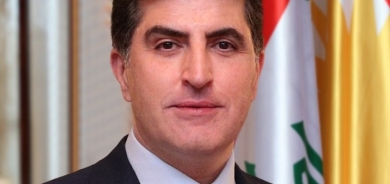How did insurgency return to Anbar?

What happened? When the Americans left, tens of thousands of Iraqi soldiers had already received advanced training from Coalition forces in Iraq and Jordan, and Baghdad's budget was in better shape than Washington's. A steady flow of oil revenues promised ample funding for whatever projects needed doing in Iraq. The March 2010 elections in Iraq eventually led to the creation of a national unity government, bringing together Nuri al-Maliki's State of Law party, Iyad Allawi's Iraqiya party, the Kurdistan Alliance, Moqtada al-Sadr's Sadirist movement and others. With so many things in its favour and a governing alliance of all of Iraq's most important political groups, how could instability return the way it has?
Part of the blame for the return of heavy political violence to Iraq must go to the civil war in neighbouring Syria. Since March 2011, the Sunni-Arab led revolt against the Assad regime has turned Syria into maelstrom of unrest and chaotic fighting. Instability has a way of spreading in such circumstances, especially when Sunni Arabs in Iraq share so much in common with their brethren next door.
We should not blame the Syrian conflict for too much of what is happening in Iraq, however. Many Jihadists in Iraq even left the country to join the conflict next door, where significant numbers of them also perished in the fighting. Jordan, Turkey and Israel also border Syria but none of these saw significant levels of internal conflict as a result of the civil war next door. Only a very divided Lebanon, besides Iraq, saw itself increasingly destabilized after the Lebanese Hezballah movement began fighting in earnest on behalf of the Assad regime. The Lebanese government also lacks the military might of Iraq, and proved incapable of preventing Lebanese Alawites from trading shots with Lebanese Sunnis in Tripoli.
The better part of the blame for resurging violence in Iraq can actually be found in Iraq itself. Mr. Maliki’s actions after the November 2010 seating of his new government explains the worsening predicament the country now finds itself in. Most importantly, Mr. Maliki violated his commitments in the 2010 Erbil Agreement -- which is what finally secured Kurdish support for, and very grudging Sunni Arab acceptance of, the formation of his new government. Maliki’s broken promises to the Sunni Arabs, the Kurds, and a number of other Iraqi groups outside his political party, on a whole range of issues related to power sharing and the Constitution, steadily increased opposition to his government.
We should remember that Mr. Maliki's government not only broke its promises to the Kurds on a whole range of issues, it also failed to give Iyad Allawi's party the positions and power sharing it promised, declaring open season on Sunni leaders like Tarek al-Hashimi, Salah Mutlak (for a time), Raafi al-Issawi and even average Sunni protestors. The sahwa Sunni Awakening Councils that helped the Americans retake control of Anbar, Salah al-Din, Ninewa, Diyala and even Baghdad in 2007 were mostly left out to dry after Mr. Maliki's government took over the program. Instead of being incorporated into Iraq's security system, they essentially lost their jobs and their positions at the same time that their leaders faced political exclusion from an ostensibly "unity government." Some nine out of ten people in jail in Iraq are Arab Sunnis, who only make up some twenty per cent of the country's population.
At the same time, many governorates saw broken promises from Baghdad. Some $30 billion was "spent" on an electric grid that still does not provide much electricity. All kinds of other promised government services also still fail to serve most average people. Even the recently promised $5 a barrel bonus fee for oil producing governorates, recently passed in the Iraqi Parliament, somehow was back to $1 in Mr. Maliki's January draft of the 2014 Iraqi budget.
In 2011 and 2012, Mr. Maliki's creation of the Tigris Operations Command even threatened to spark violence between the Kurds and his government, as the new force quickly moved to try and force the peshmerga out of disputed territories. Instead of settling the disputed territories according to Article 140 of the Constitution, as Mr. Maliki promised to do in the 2010 Erbil Agreement, he thus created an unconstitutional military force answerable directly to him (and whose commander was not appointed by the Parliament as the law requires) and proceeded to send it towards Kurdistan. It was only the outbreak of demonstrations throughout Sunni Arab parts of Iraq, combined with Mr. Maliki's decision to forcibly suppress these demonstrations, that forced the Tigress Operations Force to abandon its confrontation line with the Kurds and head towards places like Suleyman Bek.
Mr. Maliki and his government of course have reasons for pursuing their policies, and claim to be acting on behalf of all Iraqis' interests. Many of their explanations even sound plausibly good. In assessing the most important choices of the Maliki government since 2010, however, it also seems difficult to imagine a better recipe for bringing heavy unrest and violence back to Iraq.

 David Romano
David Romano







